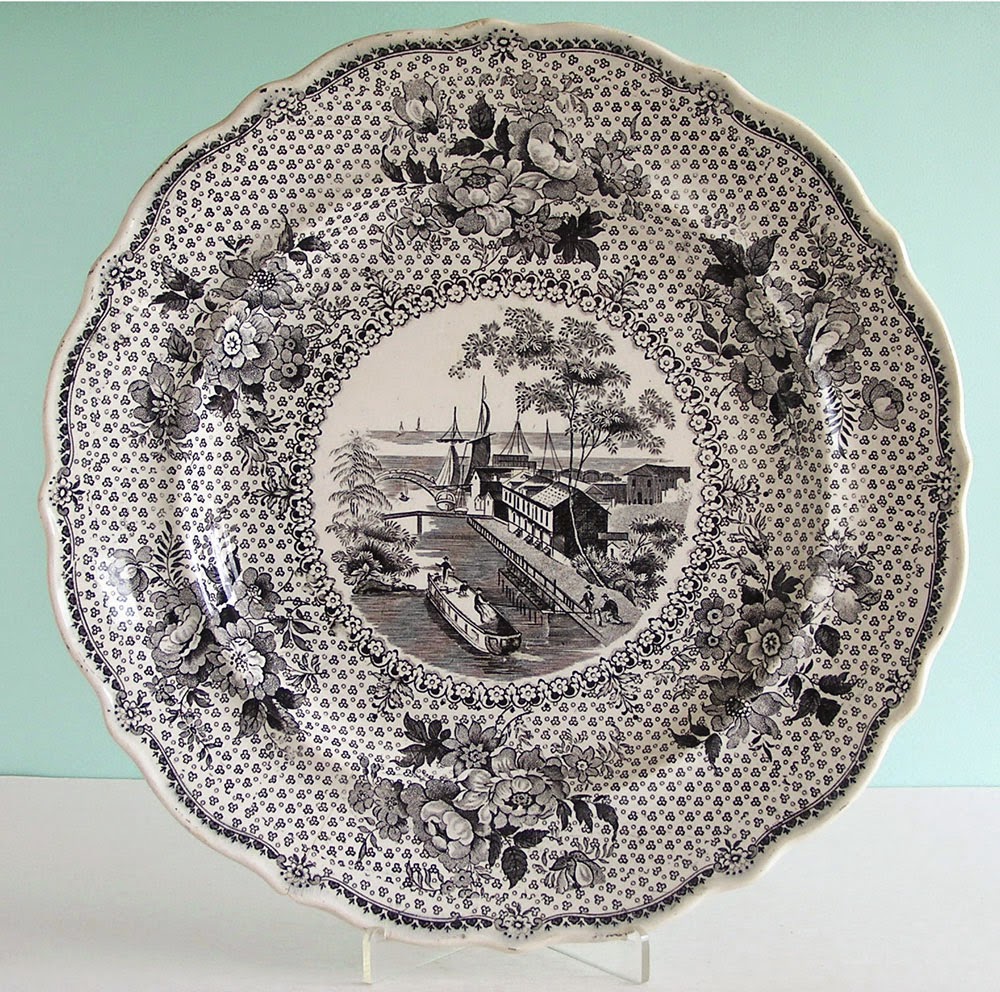Period rooms first appeared in Europe. Artur Hazelius founded the Nordiska Museet (Nordic Museum) in Stockholm in 1873. Hazelius set up vignettes or tableaux similar to those found in wax museums, using mannequins to display the costumes and furnishings of the various geographical regions of Sweden. In 1891, Hazelius opened the first open-air, “living history” museum, called Skansen, which incorporated entire buildings occupied by families who demonstrated their traditional crafts and trades to visitors. Like American proponents of the Colonial Revival, Hazelius was worried that rural, pre-industrial skills and values were being lost and needed to be preserved in a special setting.
 |
| Organ grinder and women in traditional dress at Skansen, 1905 Photo from Wikimedia Commons |
By the 1890s, museums in Zurich, Nuremberg, and Munich also had period rooms. Previously, these museums, like most, arranged their collections by type or material. But in the 1880s, museum curators began to feel that visitors would have a better understanding of art and history if they organized objects by period and style, thus giving a total picture of the culture of a specific moment. While there were many people in the United States who were very interested in the “Skansen Idea” and period rooms, it took some time for the idea to be implemented in this country. In part, this was because many museums still resisted the idea of presenting early American furnishings and household objects as “art.”
 |
| New England Kitchen of 1750, Essex Institute Postcard from the collection of the New York Public Library |
George Francis Dow presented his period rooms at the Essex Institute as historical exhibits, rather than artistic ones: his aim was to give visitors the impression they were peeking into scenes of everyday life in colonial New England. In an article written for the Bulletin of the Metropolitan Museum of Art, Dow explained how he created this sense of reality:
“These rooms [the kitchen, bedroom, and parlor] were then furnished with every detail, however small, so as to show interiors in an old-time house of that locality. An effort was made to heighten the illusion of actual human occupancy by casually placing on the table before the fireplace in the parlor a Salem newspaper printed in the year 1800 and on it a pair of silver-bowed spectacles, as though just removed by the reader. Elsewhere was placed a work basket with a half-knitted stocking on the top of other work, the knitting needles in place; and in other ways the illusion of daily occupancy was created.”
 |
| Parlor of 1800, Essex Institute Postcard from the collection of the New York Public Library |
The period rooms were just the beginning for Dow; in 1910 the Institute acquired its first historic structure, the 17th-century John Ward house, and moved it to a lot behind the museum. Dow restored the building to what he believed was its original appearance, and, inspired by Skansen, had guides in colonial costume providing interpretation for visitors. Over the years, the museum purchased many more buildings, including a shoemaker’s shop and an elegant Federal mansion, which served as examples of the varied architectural styles found in New England before the Civil War.
 |
| Bedroom of 1800, Essex Institute Postcard from the collection of the New York Public Library |
Because Dow’s aim was to create an illusion of historical reality, he was happy to use reproductions in his period rooms and houses. Nor was he trying to recreate actual places; rather, his rooms were imaginative composites of “typical” rooms. This would not be the case in the period rooms established in museums such as the Metropolitan Museum of Art in New York, the Philadelphia Museum of Art, and the Brooklyn Museum in the 1920s and 1930s. Here, the goal was to bring together the finest pieces of decorative art and place them in worthy settings, generally by removing woodwork and other architectural elements from existing buildings and reinstalling them in the museums’ period rooms.
The opening the American Wing of the Metropolitan in 1924, the first permanent exhibition at an art museum of American furniture and decorative arts, marked an important turning point in the Colonial Revival. We’ll cover this key development in a future blog post.
The Essex Institute merged with the Peabody Museum of Salem in 1992 to become the Peabody Essex Museum. You can still visit their historic properties, including the John Ward House.

































